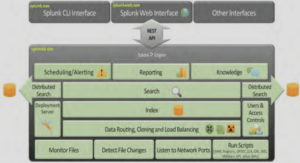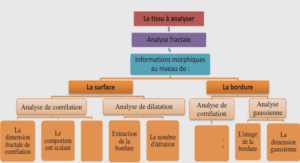A boom in cellular networks and Internet characterizes the last decade. Rapid advances in these two areas resulted in increasing demands of mobile users for Internet oriented applications. Thus, the provision of data packet transfer over the radio interface becomes more and more important for mobile operators. This trend has been taken into account while planning 3rd generation cellular systems (3G). Compared to 2G, 3G systems are designed to offer a packet-switched mode for data transfer in parallel to a circuit switched mode since the beginning of 3G studies. This is one of significant features of 3G systems, besides others. In our work, we consider the Europe version of 3G that is denoted as Universal Mobile Telecommunication System (UMTS). To provide reliable data transfers, protocols implementing ARQ (Automatic Repeat reQuest) techniques are needed. This thesis studies ARQ protocols that can be found at the global UMTS protocol architecture: RLC (Radio Link Control), TCP (Transmission Control Protocol) and MAC-hs (Medium Access Control-high speed). Compared to 2G systems, the UMTS ARQ mechanisms are more elaborated and they include new interesting features. It is worthwhile to analyze the corresponding ARQ protocols and their relation with the ARQ of TCP since number of UMTS services is expected to be provided via the Internet TCP/IP stack. Our work focuses on the flexibility of the protocols and interactions between them.
One of the most successful and widely used a 2G system in Europe, as well as in other parts of the world, represents the GSM system (Global System for Mobile communication, see e.g., [LG99]). The first GSM network was launched in the first half of 1990s. By 2001, the GSM system represented 70% of the world’s wireless market.
The main objective of GSM was to provide mobile users with voice telephony and international roaming services. Data rates in GSM were limited. The original GSM system was just offering a 9,6 kbit/s user data rate; later on, this rate was increased to 14,4 kbit/s. A growing interest of mobile users about data oriented services pushed mobile operators to introduce several new advanced tec hnologies into the GSM architecture; such as HSCSD (High Speed Circuit Switched Data), GPRS (General Packet Radio Service) or EDGE (Enhanced Data Rates for GSM Evolution). These enhancements gradually allowed mobile operators to increase data rates from 14,4 kbit/s up to 384 kbit/s in EDGE ([ST01]). This data rate corresponds to the expected data rate in UMTS for wide area; it is assumed up to 2 Mbit/s data rates for micro cells and indoor UMTS environments.
In comparison with 2G systems, UMTS provides mobile users with several new features. We have already mentioned the introduction of the packet-switched mode at the initial studies of UMTS. Furthermore, the UMTS system offers a mobile user to establish and manage several radio connections (or radio bearers) at the same time. Thus, a mobile user can simultaneously make use several different services. For example, a user can rapidly download a file from Internet while running a video teleconference.
The UMTS architecture (see e.g., [HT00], [ST01] or [L01]) is decomposed into two major parts: Core Network or CN and UMTS Terrestrial Radio Access Network or UTRAN . This thesis is interested in the radio access network.
The UTRAN consists of one or more Radio Networks Sub-system (RNS). A RNS is further composed of one Radio Network Controller entity (RNC) and of one or more entities called Node Bs. A RNC entity (respectively Node B) corresponds to the Base Station Controller entity or BSC (respectively Base Transceiver Station or BTS) in the GSM network. A RNC entity controls functions related to the UMTS radio interface such as admission control, radio resource control, power control, etc. Studies concerning these issues have been subject of many works and can be found for example in [P01], [K01], [M00a] or [N01]. In addition, the RNC entity manages protocol exchanges on Iu, Iur, and Iub interfaces (see figure 1). A Node B performs functions relevant to the physical layer processing; e.g., coding and interleaving, spreading/dispreading, modulation/demodulation, rate adaptation, physical measurements, etc. This network entity also performs some basic radio resources management operations such as softer handover or close loop power control. The Time Division Multiple Access (TDMA) technique utilized in the GSM/GPRS system is replaced in UMTS by Wideband Code Division Multiple Access (WCDMA) tec hnique. User information bits are spread over a 5 MHz wide bandwidth by multiplying the user data with quasi-random sequence bits (chips) that is derived from spreading codes.
Both Frequency Division Duplex (FDD) and Time Division Duplex (TDD) modes are supported by the WCDMA technique. The FDD mode uses different 5 MHz frequency bands for the downlink transmission (i.e. from a Node B to a UE entity; we also use a label ¯ for downlink) and for the uplink transmission (i.e. from a UE to a Node B; ). In a case of the TDD mode, the same frequency bandwidth is used for both directions (downlink, uplink). Our studies consider just the FDD mode.
The UTRAN layer architecture (see e.g., [3G25301] or [HT00]) consists of several layers and sub-layers As in other telecommunication networks, the UTRAN architecture distinguishes two planes: user and control. The user plane handles user messages, whereas the control plane manages control (or signaling) messages. Higher layer, such as Call Control (CC), Mobility Management (MM) or Session Management (SM) are transparent to the radio access network and they are not discussed in our next work. ; in the rest of the thesis, we employ the term layer to mean as layer as sub-layer:
1. Physical layer (Phy)
2. Data link lay er
a. Medium Access Control (MAC)
b. Radio Link Control (RLC)
c. Packet Data Convergence Protocol (PDCP)
d. Broadcast /Multicast Control (BMC)
3. Network layer
a. Radio Resource Control (RRC) .
As in other telecommunication networks, the UTRAN architecture distinguishes two planes: user and control. The user plane handles user messages, whereas the control plane manages control (or signaling) messages. Higher layer, such as Call Control (CC), Mobility Management (MM) or Session Management (SM) are transparent to the radio access network and they are not discussed in our next work.
The physical layer ([3G25212], [3G25302]), located in a Node B, supports the WCDMA technique. The layer offers services to the above MAC layer via radio transport channels. A transport channel is characterized by the size of transported blocks and by physical parameters. Transport channels are unid irectional. A basic radio frame period of 10 ms (corresponding to 15 slots) is considered at the physical level. A radio transport channel can use a small multiple of the basic radio frame period duration to transmit a data unit of the MAC layer (transport block). The corresponding period is called Transmission Time Interval (TTI), where TTI Î (10, 20, 40, or 80 ms). Small values of TTI are used for real time services (e.g., voice), whereas large values of TTI are configured for non-real time services (e.g., file transfers).
The MAC layer ([3G25321]) offers services to the RLC layer via logical channels that are classified into control and traffic channels. Logical control channels (respectively traffic channels) convey information originating from the control plane (respectively from the user plane). Parameters associated with a logical channel depend on the type of supported service; e.g., voice, video, signaling messages, etc. One of MAC tasks is to schedule RLC blocks from different logical channels (i.e. from different RLC entities) according to physical constraints and QoS requirements. Furthermore, MAC is responsible for mapping data of logical channel(s) onto the appropriate transport channel(s) and vice versa. This means that the layer multiplexes (de multiplexes) data to (from) transport channels. The MAC is constituted of several MAC entities; the initial release of 3GPP (Release 99) specified three types of MAC entities. Each MAC entity is designated to handle specific transport channel(s):
(i) MAC-b for broadcast channel,
(ii) MAC-d for dedicated channels,
(iii) MAC-c/sh for paging, access, shared channels and common packet channel.
Chapter 1 Introduction of ARQ protocols in UMTS |






